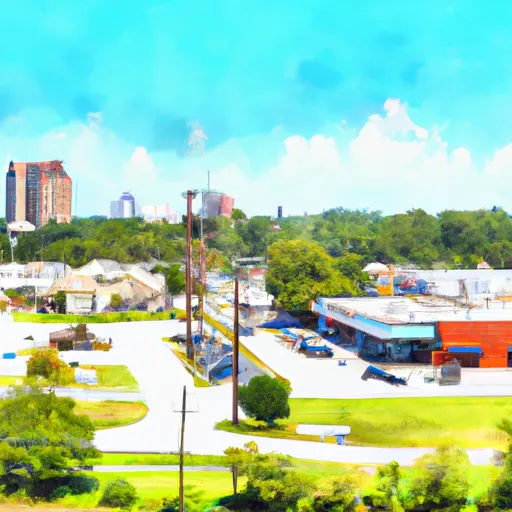-
 Snoflo Premium
Snoflo Premium
Get unlimited access to all our content
With no Ad interruptions! - Start Your Free Trial Login with existing account
Hosford
Eden Index
Climate
7.3
•
Recreation
3.2
•
Community
0.8
•
Safeguard
4.2/10

Hosford, located in Liberty County, Florida, is a small rural community with a population of around 650 residents. The town experiences a humid subtropical climate, characterized by hot, humid summers and mild winters. Summers in Hosford are typically hot and humid, with average temperatures ranging from the upper 80s to low 90s°F (30-33°C), while winters are mild with average temperatures around the mid-60s°F (18°C).
The hydrology constituents of Hosford are primarily influenced by the Apalachicola River, which runs nearby. The river, along with several creeks and streams in the area, provide opportunities for water-based activities such as boating, fishing, and swimming. The region is also known for its diverse wildlife, making it a popular destination for birdwatching and nature photography.
Outdoor recreation opportunities in Hosford include exploring the nearby Apalachicola National Forest, which offers numerous trails for hiking, biking, and horseback riding. The forest also provides opportunities for hunting and camping. Additionally, the nearby Gulf of Mexico provides access to beautiful beaches for sunbathing, swimming, and shell collecting. With its pleasant climate and diverse natural surroundings, Hosford offers ample opportunities for outdoor enthusiasts to connect with nature.
What is the Eden Index?
The Snoflo Eden Index serves as a comprehensive rating system for regions, evaluating their desirability through a holistic assessment of climate health, outdoor recreation opportunities, and natural disaster risk, acknowledging the profound impact of these factors on livability and well-being.
Climate Health Indicator (CHI): 7.3
Hosford receives approximately
1538mm of rain per year,
with humidity levels near 88%
and air temperatures averaging around
20°C.
Hosford has a plant hardyness factor of
8, meaning
plants and agriculture in this region tend to thrive here all year round.
By considering the ideal temperature range, reliable water supplies, clean air, and stable seasonal rain or snowpacks, the Climate Health Indicator (CHI) underscores the significance of a healthy climate as the foundation for quality living.
A healthy climate is paramount for ensuring a high quality of life and livability in a region, fostering both physical well-being and environmental harmony. This can be characterized by ideal temperatures, reliable access to water supplies, clean air, and consistent seasonal rain or snowpacks.
Weather Forecast
Streamflow Conditions
Ochlockonee. Georgia
Area Rivers
Ochlockonee. Georgia
Snowpack Depths
Ochlockonee. Georgia
Reservoir Storage Capacity
Ochlockonee. Georgia
Groundwater Levels
Recreational Opportunity Index (ROI): 3.2
The Recreational Opportunity Index (ROI) recognizes the value of outdoor recreational options, such as parks, hiking trails, camping sites, and fishing spots, while acknowledging that climate plays a pivotal role in ensuring the comfort and consistency of these experiences.
Access to outdoor recreational opportunities, encompassing activities such as parks, hiking, camping, and fishing, is crucial for overall well-being, and the climate plays a pivotal role in enabling and enhancing these experiences, ensuring that individuals can engage in nature-based activities comfortably and consistently.
Camping Areas
| Campground | Campsites | Reservations | Toilets | Showers | Elevation |
|---|---|---|---|---|---|
| Dr. Julian G. Bruce State Park | 60 | 9 ft | |||
| Chattahoochee City Park | None | 96 ft | |||
| Torreya State Park | None | 263 ft | |||
| Whitehead | 13 | 21 ft | |||
| Three Rivers State Park | None | 180 ft | |||
| Camel Lake | None | 83 ft | |||
| Mack | 12 | 26 ft | |||
| Hall Landing | None | 93 ft | |||
| Eastbank - Lake Seminole | 40 | 87 ft | |||
| Hitchcock Lake Hunt Camp | None | 2 ft |
Nearby Ski Areas
Catastrophe Safeguard Index (CSI):
The Catastrophe Safeguard Index (CSI) recognizes that natural disaster risk, encompassing floods, fires, hurricanes, and tornadoes, can drastically affect safety and the overall appeal of an area.
The level of natural disaster risk in a region significantly affects safety and the overall livability, with climate change amplifying these risks by potentially increasing the frequency and intensity of events like floods, fires, hurricanes, and tornadoes, thereby posing substantial challenges to community resilience and well-being.
Community Resilience Indicator (CRI): 0.8
The Community Resilience Indicator (CRI) recognizes that education, healthcare, and socioeconomics are crucial to the well-being of a region. The CRI acknowledges the profound impact of these elements on residents' overall quality of life. By evaluating educational resources, healthcare accessibility, and economic inclusivity, the index captures the essential aspects that contribute to a thriving community, fostering resident satisfaction, equity, and social cohesion.

